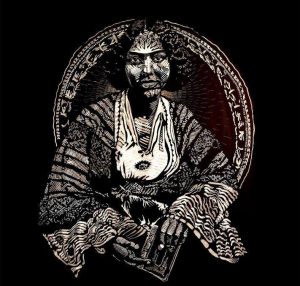
Photo info …
Credit: T.J. Reynolds via NUVOView Source
(ca. 1790s-1858). Cheney Lively (also spelled Chaney, Chany, China, or Chinny) may have been the city’s first permanent African American resident.
Lively was born enslaved in Kentucky in the 1790s and little is known about her early life there. In the 1810s, surveyor (1771-1827) either bought or hired her as a housekeeper prior to their migration to rural Washington County, Indiana, sometime before 1814. There they ran a horse mill, a store, and a distillery. Census records from this period list her as a free woman of color.
In 1820, Indiana’s state government hired Ralston to survey and plan its new capital, Indianapolis, and in 1822, Lively permanently moved there with him. Though cases have been made for Aaron Wallace and Ephraim Ensaw as Indianapolis’s first Black residents, their stays were more temporary than Lively’s. Early on, she attended , and though she could not read or write, was a member of the Indianapolis Tract Society, an evangelical missionary group founded in 1825, that disseminated Christian literature to immigrants, Native Americans, and freed slaves. Occasional notes by historians and other early residents indicate that she was well regarded in the community, and local children sometimes referred to her as “Aunt Cheney.”
When Ralston gave Lively land in December 1825, she gained financial independence. Shortly thereafter, in January 1826, she married William Smith, about whom nothing is known. Ralston died in 1827, and it is widely believed that he left his estate to Lively. However, records show that courts declared the estate insolvent, so it is unclear how much of his previous wealth passed to her. Lively appears in the 1830 census as the only Black female head of household in the city, and George Lockerbie’s 1835 assessment of Indianapolis property owners records her personal estate at $1,450 ($42,904 in 2020).
In 1836, Lively married barber and activist John G. Britton (c. 1808-1885). Though Lively is not known to have had biological children, her new husband had a three-year-old daughter named Eliza Jane Britton, who lived with them. John Britton was an early member of , a Black congregation founded in 1846. He served as the first grandmaster of the Most Worshipful Prince Hall Grand Lodge in Indianapolis and as president of the 1851 Indiana State Negro Convention. The convention served to organize Indiana’s African Americans and to develop strategies for racial self-determination. As with many political wives at the time, Lively’s role in her husband’s activities was likely an advisory one.
While the Brittons do not seem to have ever been destitute, their finances eventually took a downturn. The 1850 census shows six boarders living with the family, and the 1860 census records an estate of only $150 for John G. Britton.
Cheney Lively Britton died of unknown causes. Local leader noted her passing in his diary while writing about the Indianapolis Old Settlers Reunion of 1858. John G. Britton married twice more and died in 1885 of complications from gangrene.
Both died surrounded by family. In 1851, Eliza Jane Britton married barber Ruben Gibbs, with whom she had two children, Cora and Marcus. Cora’s descendants include musician George Isaac Temple, who married eventual coowner Fredonia Stewart.

Help improve this entry
Contribute information, offer corrections, suggest images.
You can also recommend new entries related to this topic.

